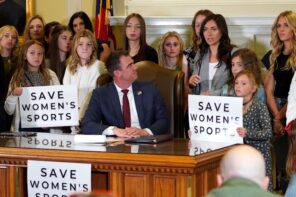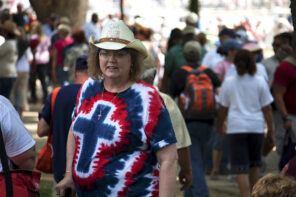The Church of Jesus Christ of Latter-day Saints is in the midst of a massive building campaign to serve the estimated 14 million Mormons throughout the world. Of the 81 temples currently in the U.S., most are located in the West, in small cities and suburban locations where Latter-Day Saints members are heavily concentrated. However, this week, a new temple opened in the center of Philadelphia, one of the least Mormon places in the United States.
While Mormons make up almost two percent of the population nationwide, they are but a small fraction in this northeastern city, numbering just over 40,000. Despite their small numbers, the church is rumored to have spent upwards of 100 million dollars to build this temple, located in a prime downtown location, and constructed with detailed craftsmanship rarely seen in contemporary buildings. In terms of sheer size it rivals the nearby Cathedral Basilica of Saints Peter and Paul, and the headquarters of the Philadelphia Archdiocese, which serves over 1.4 million area Catholics.
The LDS church is undoubtedly aware that the city of Philadelphia has the fastest growing millennial population among the nation’s ten largest cities. In 2002 an LDS temple opened in Manhattan, but the Philadelphia temple is unique in that it’s part of a “Mormon complex,” which includes a meetinghouse (used for weekly worship), a residential high-rise building, and commercial spaces. In short, it’s carving out a distinctly Mormon enclave.
The temple has received largely positive media coverage and one architecture critic celebrated it as “the most radical work of architecture built in Philadelphia in a half-century.” Constructed in an area populated by some of the city’s most prominent cultural institutions, including the oldest natural history museum in the Americas, the Philadelphia Museum of Art, the Masonic Temple, and the Barnes Foundation, the edifice is highly visible from the I-676 expressway. Nationwide, adherents of this once-persecuted, minority religion are increasingly visible in American public life and are playing an important role in U.S. politics, particularly in the 2016 presidential election. It appears that LDS church has reached a new high point in popularity and cultural prestige in the broader American society.
But what about the demographic challenges that the LDS church and other denominations face in reaching a millennial generation that leans toward disaffiliation? LDS church statistics show that membership grew by 30% between 1990 and 2008, twice the growth rate of the U.S. population, and growth rates appear to be even more impressive in Philadelphia. However, as Joanna Brooks has written, recent studies indicate that the LDS church is having greater difficulty in retaining members baptized in the church, particularly young adults. While the church managed to retain members at a rate of 93% between 1970 to 2000, the retention rate dropped to around 64% between 2000 and 2010.
The formation of a Mormon enclave will likely be critical to the church’s ability to retain members, especially in a city that can be unfriendly to many widely-held Mormon values. Mormons identify with the Republican party at a rate of 80%, but in Philadelphia Democrats outnumber Republicans 7 to 1. The church’s stance in opposing same-sex marriage in particular will be unappealing to many of Philadelphia’s millennials. Time will tell if experiments in Mormon urbanism will spark a surge of enthusiasm among millennials, but the odds are against them.
Still, just in case it doesn’t work out, the LDS church is including the residential and commercial development with the Philadelphia temple as an investment opportunity, a similar approach it used in Salt Lake City a few years back. As the New York Times reported: “The project also represents an investment opportunity for the church in a strengthening real estate market that is benefiting from a growing move from the suburbs to the city, said Tom King, a director of Property Reserve, a real estate investment affiliate of the church.





